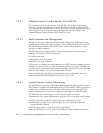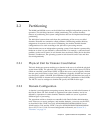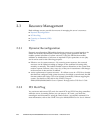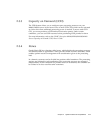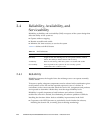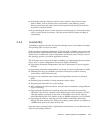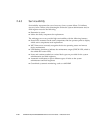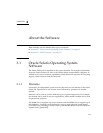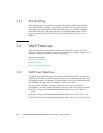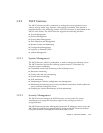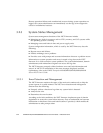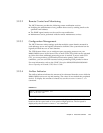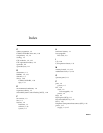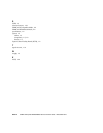
3-4 SPARC Enterprise M4000/M5000 Servers Overview Guide • December 2010
Because operation failures and unauthorized accesses during system operation are
logged, the system administrator can immediately use the logs to investigate the
causes of unauthorized accesses.
3.2.3 System Status Management
System status management functions of the XSCF firmware include:
■ Managing any faults in resources such as CPUs, memory, and I/O systems while
the operating system is running
■ Managing errors and faults in fans and power supply units
System configuration information, which is used by the XSCF firmware, does the
following:
■ Reports errors and failures
■ Predicts midrange server problems
■ Provides users with prompt and accurate information whenever a problem occurs
Information on system operation and errors is stored as log data on the XSCF
firmware. It is used to analyze system problems. The system administrator, domain
administrator, and maintenance engineer can access the log data.
The XSCF firmware promptly collects hardware error and fault information and
stores it in XSCF. For information on the error messages displayed and their
explanations, refer to the SPARC Enterprise M3000/M4000/M5000/M8000/M9000
Servers XSCF User’s Guide.
3.2.3.1 Error Detection and Management
The XSCF firmware monitors the status of the main unit continuously to help the
system operate in a stable manner. The XSCF error detection and management
function does the following:
■ Promptly collects a hardware log when any system fault is detected
■ Analyzes the error
■ Determines the error location
According to the fault conditions, the XSCF firmware implements part of domain
degradation or resets the system when necessary. Easy-to-understand and accurate
information on hardware errors and fault locations is provided, which enables the
administrator to take prompt action.




